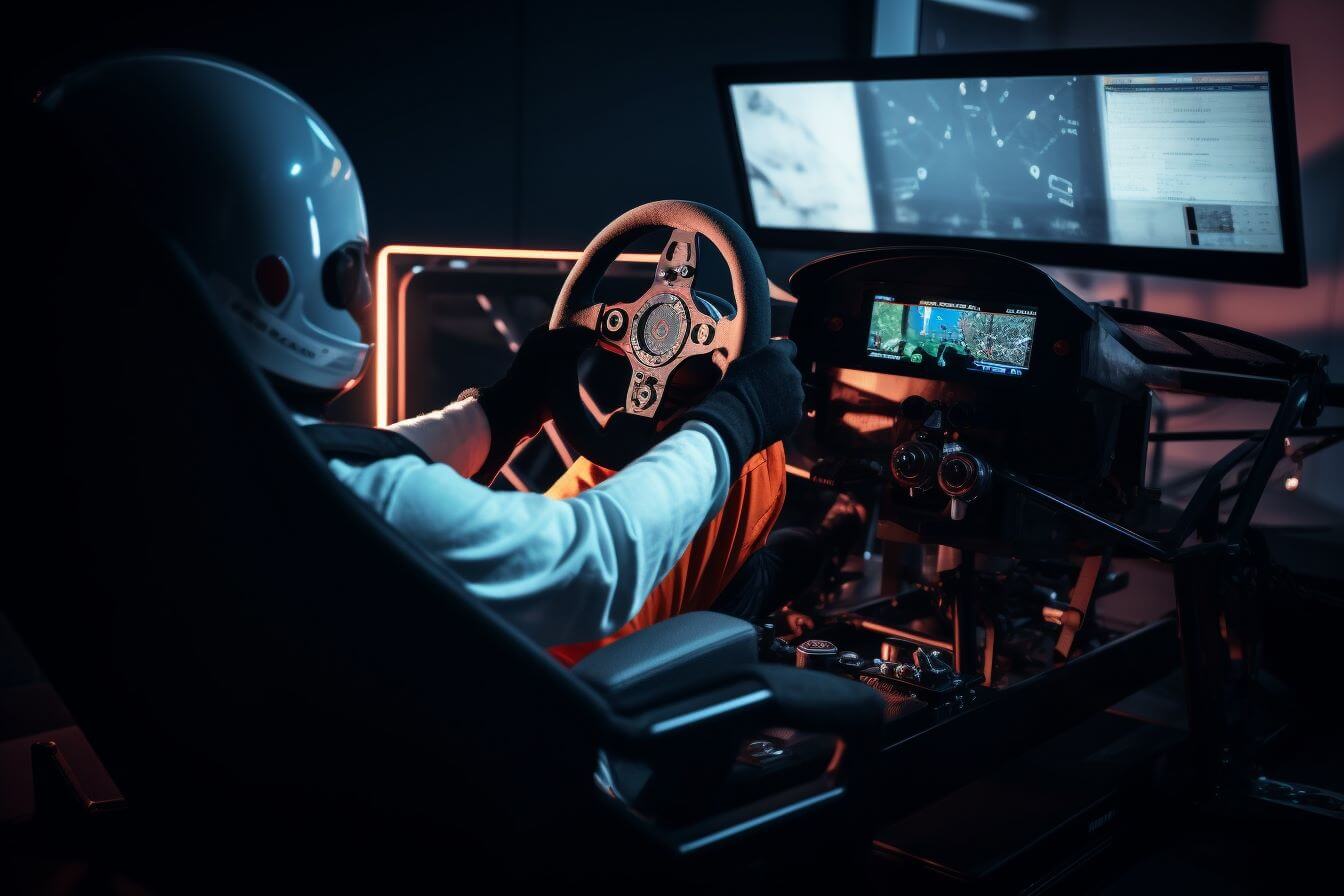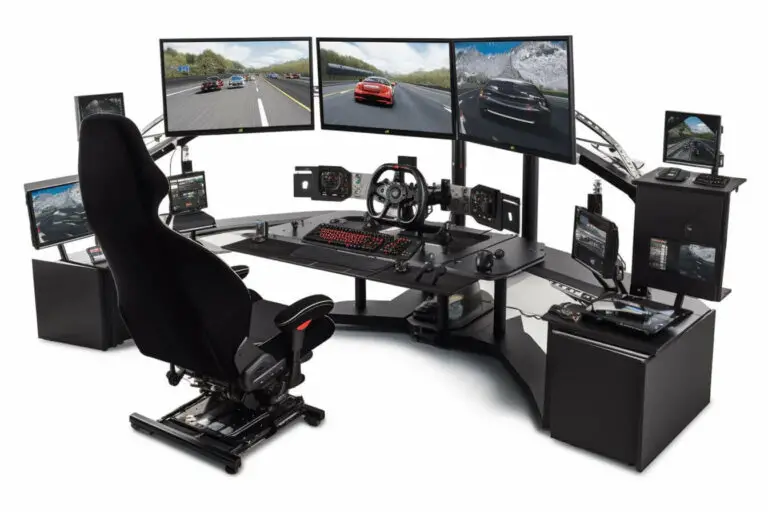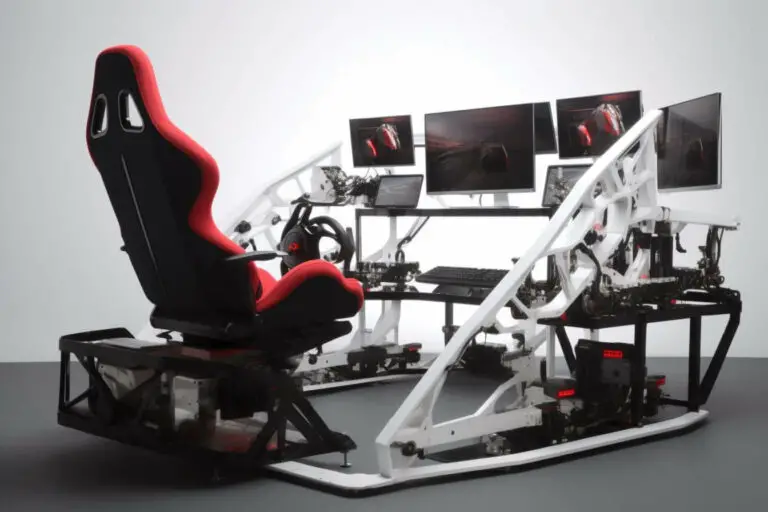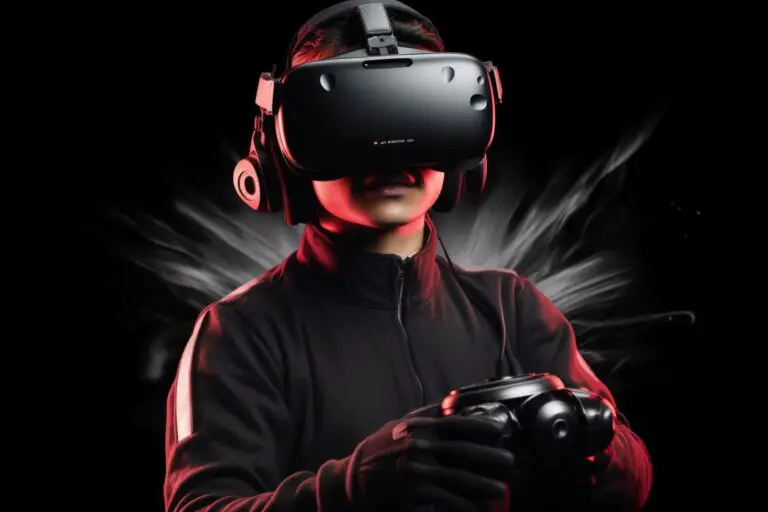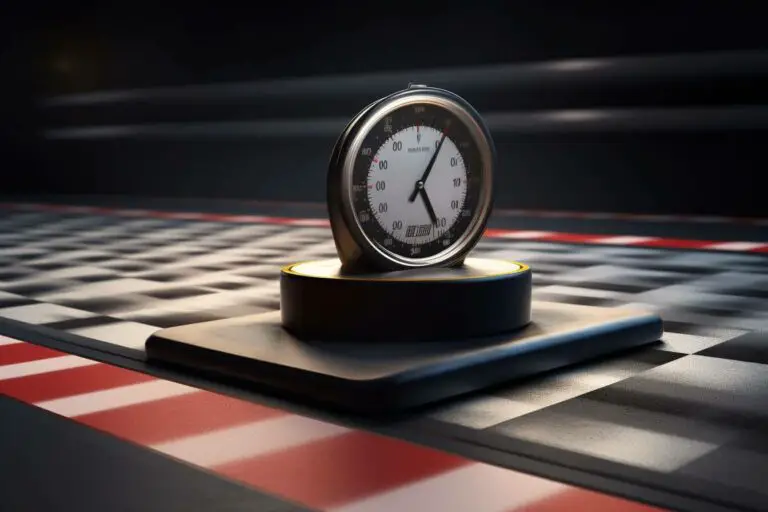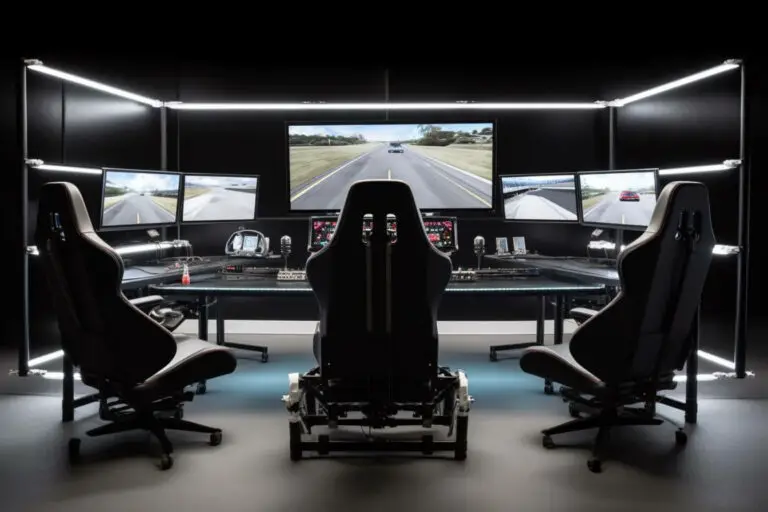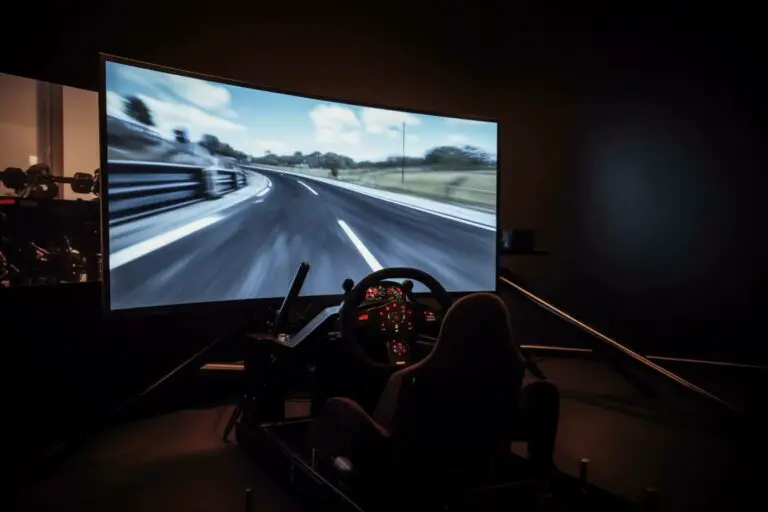Discover The Insider Tips For Smoother Braking And Acceleration In Sim Racing
- Discover The Insider Tips For Smoother Braking And Acceleration In Sim Racing
- Understanding Vehicle Dynamics
- Perfecting Your Footwork
- Fine-Tuning Your Brake Bias
- Mastering Trail Braking Techniques
- Utilizing Throttle Control Strategies
- Training With Telemetry Data
- Learning From Pro Sim Racers And Real-World Drivers
- Frequently Asked Questions
- How Can I Adapt My Sim Racing Setup To Better Suit My Personal Driving Style And Preferences For Smoother Braking And Acceleration?
- Are There Any Specific Hardware Or Software Recommendations, Such As Pedals Or Force Feedback Settings, That Can Help Improve My Braking And Acceleration In Sim Racing?
- How Important Is The Role Of Car Setup And Customization In Achieving Smoother Braking And Acceleration, And What Are Some Key Aspects To Focus On?
- Can You Provide Any Tips On Dealing With Specific Weather Or Track Conditions That Might Affect Braking And Acceleration Performance In Sim Racing?
- How Can I Effectively Practice And Develop My Skills In Braking And Acceleration Outside Of Actual Races Or Time Trial Sessions? Are There Specific Drills Or Exercises That Can Help Me Improve?
- Conclusion
Sim racing enthusiasts, we know you’re always looking for ways to improve your driving skills and shave seconds off your lap times. One of the most critical aspects of sim racing that can make or break your performance is mastering smooth braking and acceleration.
It’s not just about slamming on the brakes or flooring the gas pedal; it’s a delicate art that requires finesse and precision. In this article, we’ll share some insider tips from experienced sim racers who’ve spent countless hours perfecting their craft.
We’ll dive into techniques that’ll help you maintain control over your virtual vehicle while improving overall consistency in your races – ensuring you’re on track to becoming a true sim racing pro! So buckle up, because we’re about to provide you with valuable insights on how to elevate your game.
Other Interesting Articles to improve your Sim Racing Techniques
How To Improve Your Sim Racing Lap Times: Shave Seconds Off Your Lap Time
What Are the Top Techniques to Master Corners in Sim Racing?
How Can I Optimize My Car Setup for Faster Lap Times in Sim Racing?
Which Driving Aids Can Help You Become a Faster Sim Racer?
How to Consistently Hit the Perfect Racing Line for Ultimate Speed
What Can You Learn from Pro Sim Racers to Boost Your Performance?
Uncover the Mental Strategies to Stay Focused and Improve Your Sim Racing Skills
How to Analyze Telemetry Data to Unlock Your Full Sim Racing Potential
How to Train Your Way to Sim Racing Greatness: Tips, Tricks, and Techniques
Understanding Vehicle Dynamics
Imagine hurtling down the track in your favorite sim racing game, aiming for that perfect lap time. You can almost feel the vibrations of the wheel beneath your fingertips and hear the roar of the engine as you push your virtual car to its limits. But what if there was a way to gain an edge over your competitors, a secret sauce that could be the key to mastering smoother braking and acceleration?
Understanding vehicle dynamics is crucial when it comes to improving your performance on the digital racecourse. The more familiar you are with how a car behaves under various conditions, such as changes in speed, road surfaces, or grip levels, the better equipped you’ll be to make informed decisions about braking and accelerating throughout each lap.
This knowledge will allow you to optimize your driving technique by executing smooth inputs that maintain overall stability and control. The first step toward unlocking these insider tips lies in grasping fundamental concepts like weight transfer and tire grip management.
When braking or accelerating, a vehicle’s weight shifts forward or backward respectively; this alters how much traction each tire has available at any given moment. By learning how to manage these transitions effectively – for example, easing off the brakes gently before entering a corner rather than slamming them on suddenly – you’ll not only minimize wear on tires but also achieve faster times through improved handling characteristics.
Similarly, gradual application of throttle upon exiting turns ensures optimal distribution of power while reducing risks associated with excessive wheelspin or loss of control due to sudden torque spikes. So go ahead: harness this newfound understanding of vehicle dynamics and elevate your sim racing prowess to new heights!
Perfecting Your Footwork
Perfecting Your Footwork
One of the most important aspects of sim racing is mastering your footwork. This means having precise control over your braking and acceleration to maintain a smooth and consistent driving experience. Proper footwork not only improves lap times but also significantly reduces the risk of losing control or spinning out during races.
- Practice heel-toe shifting: Heel-toe shifting involves using one foot to operate both the brake and accelerator pedal simultaneously, allowing for smoother transitions between gears as well as more efficient use of engine power. To practice this technique, start by finding a comfortable seating position that allows you to easily access both pedals with your right foot.
- Focus on progressive input: When applying pressure to either the brake or accelerator pedal, be sure to do it progressively rather than suddenly slamming down on them. Gradual application ensures better stability when entering corners and helps prevent oversteer/understeer situations.
- Pay attention to weight transfer: In any vehicle, including race cars in sim games, weight shifts from front to back (and vice versa) when accelerating or decelerating. Being aware of how these dynamics affect your car’s handling will help you make necessary adjustments while cornering, leading to improved overall performance.
To truly master braking and acceleration in sim racing, dedicate ample time towards practicing these techniques until they become second nature. By focusing on perfecting your footwork, you’ll quickly notice improvements in your consistency around tracks which ultimately translates into faster lap times and higher finishes in competitive events.
Remember that patience and persistence are key; even professional drivers continually refine their skills throughout their careers, so embrace each opportunity for growth within the virtual world of motorsports!
Fine-Tuning Your Brake Bias
Back in the days of chariot racing, fine-tuning your brake bias would have been a dream. But today, sim racers have the luxury of adjusting their vehicle’s brake balance to achieve smoother braking and acceleration.
The brake bias is the distribution of braking force between the front and rear axles. It plays an essential role in determining how your car behaves during cornering or when stopping abruptly. A well-adjusted brake bias can significantly improve your lap times by allowing you to maintain control over your vehicle under various driving conditions.
To start experimenting with your brake bias settings, head into your sim racing game’s setup menu and look for options related to brakes. Generally, most games will allow you to adjust the brake pressure percentage distributed between front and rear tires using sliders or numerical values.
If you’re new to altering these settings, it’s best not to make drastic changes at first; instead, try making small adjustments and take note of how they affect your car’s handling on different tracks.
As you become more comfortable with tweaking the brake bias setting, consider utilising telemetry data provided by many simulators that display real-time information about tire temperatures, grip levels and suspension behavior as you race around the track. By analyzing this data alongside any replays of previous laps, you’ll gain valuable insights into which specific areas require improvement – be it through better weight transfer management during turns or controlling oversteer when accelerating out of corners.
Armed with this newfound understanding, keep refining those settings until you find the perfect balance that maximises both stability under braking and efficient corner exit speeds – propelling you towards success in sim racing!
Mastering Trail Braking Techniques
Mastering trail braking techniques is essential for smoother acceleration and deceleration in sim racing. This advanced driving skill helps drivers maintain control of their vehicle while approaching a turn at high speed, allowing them to enter the corner with greater velocity without losing grip or stability.
By gradually releasing the brakes as you turn into a corner, weight transfers from the front wheels to the rear wheels more smoothly. This ensures optimal traction throughout the entire maneuver.
To master trail braking, it’s crucial to understand how brake pressure affects your car’s balance and handling during turns. Begin by practicing smooth application and release of brake pressure before entering a corner. As you become familiar with this technique, focus on adjusting your braking points accordingly – start applying lighter brake pressure earlier rather than harder brake pressure later in corners. This gradual approach allows your car to transition seamlessly between straight-line braking and turning, preventing sudden shifts in weight that can lead to instability or loss of grip.
As you perfect your trail braking skills, observe how different vehicles respond differently to these techniques within various sim racing games. Some cars may require more delicate adjustments in brake pressure due to their unique suspension setups or weight distribution characteristics.
Utilize telemetry tools available within most simulators to analyze your performance data and make necessary corrections based on hard evidence rather than guesswork alone. With practice and dedication, mastering trail braking will significantly enhance your overall driving experience and lap times in virtual motorsports events.
Utilizing Throttle Control Strategies
Ah, throttle control! The art of gently caressing the accelerator like a delicate flower to ensure your sim racing experience is as smooth as silk. Many aspiring racers believe that mashing the pedal to the metal is all it takes to be fast and furious on the virtual track. Alas, this approach usually results in more crashing than dashing. Our task here is to guide you through mastering throttle control strategies, saving you from becoming another tragic hero in the world of sim racing.
To truly excel in throttle management, consider these invaluable tips:
- Progressive Acceleration: Gradually increase throttle pressure when exiting corners; stomping on the gas will only result in loss of traction.
- Modulation: Learn how much throttle input is needed at different points during cornering; too little can cause understeer while too much may lead to oversteer.
- Throttle Feathering: Maintain partial throttle input during certain situations (e.g., mid-corner) for better stability and control.
- Post-braking Throttle Application: Apply light acceleration immediately after releasing brakes before entering a turn – this helps shift weight distribution and provides extra grip.
The journey towards impeccable throttle control begins by understanding its importance and practicing diligently with each race. Remember: finesse wins races, not just raw power. The perfect balance of aggression and restraint separates amateur drivers from seasoned sim racers.
So heed our advice, take time to practice these techniques consistently, and soon enough, you’ll find yourself outpacing opponents with both grace and speed—a sight worthy of poetry in motion!
Training With Telemetry Data
After mastering throttle control strategies, you might be wondering what’s next in your sim racing journey. A key aspect to enhancing your driving experience and improving your lap times is gaining a deeper understanding of braking and acceleration techniques. This not only helps optimize vehicle performance but also ensures better car control on the tracks.
One way to harness this knowledge is through training with telemetry data. Telemetry refers to the collection and analysis of real-time data from various sensors placed within the race car. In sim racing, these sensors measure crucial information such as speed, gear shifts, tire temperatures, suspension travel, brake pressure, and more.
By studying this wealth of information, you can uncover areas that require improvement or fine-tuning in your approach to braking and accelerating around corners or during straightaways. Telemetry software tools are readily available for most popular sim racing platforms like iRacing, Assetto Corsa Competizione, rFactor 2, and others. These tools allow drivers to monitor their laps closely by comparing them with other sessions or against faster drivers’ data.
With insights into where improvements can be made on track – whether it’s increasing initial brake pressure at specific turns or modulating accelerator inputs through high-speed sections – racers gain valuable feedback critical for boosting both consistency and pace.
Learning From Pro Sim Racers And Real-World Drivers
Imagine a master artist at work, effortlessly blending colors and creating breathtaking visuals. This same finesse can be seen in the techniques of professional sim racers and real-world drivers, whose smooth braking and acceleration paint their own captivating masterpiece on the virtual track. By studying these experts, you too can refine your driving skills and achieve that silky-smooth control over your vehicle.
- Watch pro sim racers’ live streams or recorded sessions to observe their pedal inputs and car handling.
- Analyze telemetry data from top-level competitors to understand how they manage weight transfer during braking and accelerating.
- Engage with experienced drivers through online forums, social media, or local racing communities for personalized tips.
By observing professionals both in sim racing environments as well as those who race on actual tracks, you’ll gain valuable insights into techniques that are applicable across various platforms. Pay attention to the way they delicately balance throttle application while cornering or seamlessly transition between braking zones without upsetting the car’s stability. You may even discover some unconventional methods that work wonders for improving lap times.
As you dive deeper into this world of high-speed artistry, remember that practice makes perfect. Allocate time not only for learning from pros but also for honing your newfound knowledge by putting it to use behind the wheel.
The road towards becoming an expert driver is paved with perseverance; thus, approach each session with determination and curiosity – soon enough, you will find yourself navigating corners like a seasoned racer leaving others in awe of your prowess on the virtual tarmac.
Frequently Asked Questions
How Can I Adapt My Sim Racing Setup To Better Suit My Personal Driving Style And Preferences For Smoother Braking And Acceleration?
In order to adapt your sim racing setup to better suit your personal driving style and preferences for smoother braking and acceleration, it’s important to consider factors like pedal sensitivity, wheel calibration, and in-game settings.
Begin by adjusting the brake and accelerator pedal sensitivity to match your comfort level – this can help you maintain control during sudden movements or gradual changes. Additionally, calibrating your steering wheel properly will ensure accurate input responses while turning or maneuvering.
Lastly, dive into the game settings themselves; tweak options such as force feedback strength or linearity until you find a balance that complements your unique driving habits. Don’t be afraid to experiment with these settings over time – finding the right combination may take several attempts but will ultimately lead to an enhanced sim racing experience tailored just for you.
Are There Any Specific Hardware Or Software Recommendations, Such As Pedals Or Force Feedback Settings, That Can Help Improve My Braking And Acceleration In Sim Racing?
Sure, you could just strap a couple of bricks to your feet and call it ‘smoother braking’ in sim racing, but let’s explore some more refined options instead.
When it comes to hardware for improving braking and acceleration, investing in high-quality pedals like the Fanatec ClubSport or Heusinkveld Sim Pedals can make all the difference by providing better sensitivity and control.
As for software settings, fine-tuning force feedback levels on your wheelbase is key; this will allow you to feel subtle changes in grip and weight transfer as they happen within the simulation. Additionally, experimenting with brake bias adjustments and throttle response curves tailored to your personal preferences can enhance smoothness during transitions between accelerating and decelerating.
Remember, practice makes perfect – so keep honing those skills until that brick-on-the-foot technique becomes ancient history!
How Important Is The Role Of Car Setup And Customization In Achieving Smoother Braking And Acceleration, And What Are Some Key Aspects To Focus On?
Car setup and customization play a crucial role in achieving smoother braking and acceleration in sim racing.
Focusing on key aspects such as brake balance, suspension settings, differential adjustments, and tire pressures can significantly impact your car’s performance on the track.
Properly fine-tuning these elements helps to optimize weight transfer during braking and acceleration, resulting in greater stability and control while driving.
Additionally, customizing your force feedback settings based on personal preferences will further enhance your ability to modulate inputs smoothly for improved lap times and overall racecraft.
Can You Provide Any Tips On Dealing With Specific Weather Or Track Conditions That Might Affect Braking And Acceleration Performance In Sim Racing?
While sunny skies may make for a serene drive, sim racers know all too well the challenges that come with tackling treacherous weather and varying track conditions. When it comes to mastering braking and acceleration in such scenarios, adapting your driving style is key.
For wet or slippery surfaces, opt for gentler inputs on both throttle and brake pedals, ensuring you maintain control of your virtual vehicle. Additionally, consider increasing the brake bias towards the rear to avoid front wheel lockups during heavy downpours.
As tire temperature can greatly impact performance, be mindful of how different weather conditions affect their grip levels – warmer tires offer better traction but are prone to overheating in hot climates, while colder ones might require some cautious warming up before reaching optimal performance.
By staying attuned to these nuances and adjusting accordingly, you’ll be prepared to conquer any curveball Mother Nature throws at you on the simulated race track.
How Can I Effectively Practice And Develop My Skills In Braking And Acceleration Outside Of Actual Races Or Time Trial Sessions? Are There Specific Drills Or Exercises That Can Help Me Improve?
To effectively practice and develop your skills in braking and acceleration outside of actual races or time trial sessions, you can engage in specific drills or exercises.
One helpful approach is to break down a track into smaller sections and focus on mastering each part individually before combining them for a full lap.
Practice consistent brake pressure application, gradual throttle input, and finding the optimal braking points for various corners.
Additionally, utilizing driving aids like ghost cars or racing lines from more experienced players can help improve your understanding of proper techniques.
Moreover, participating in online forums and watching tutorial videos can provide valuable insights into advanced strategies used by top sim racers.
Conclusion
In the end, sim racing is like a fine-tuned dance between you and your virtual car.
It’s essential to invest time in understanding your personal driving style, preferences, and hardware adjustments for smoother braking and acceleration.
Remember, practice makes perfect.
Dedicate time outside of races to explore different drills or exercises that challenge your skills.
By doing so, you’ll become an unstoppable force on the track, gracefully gliding through each corner with ease and precision.

